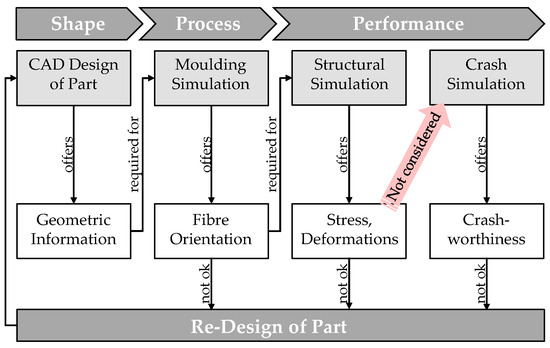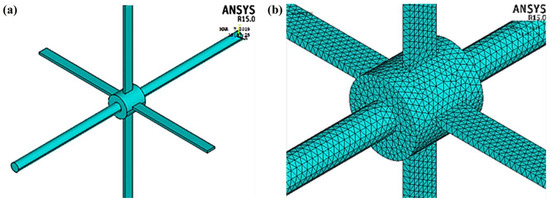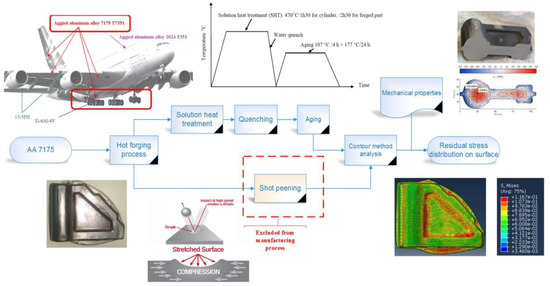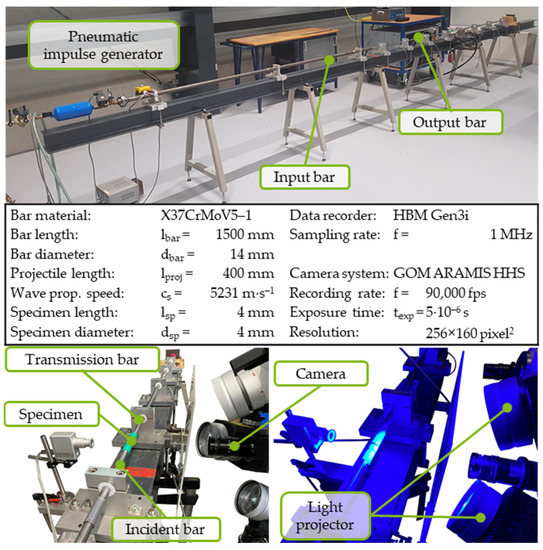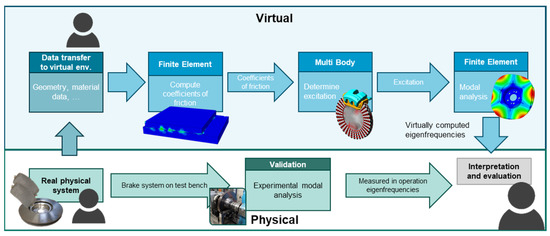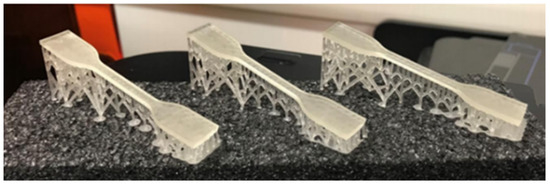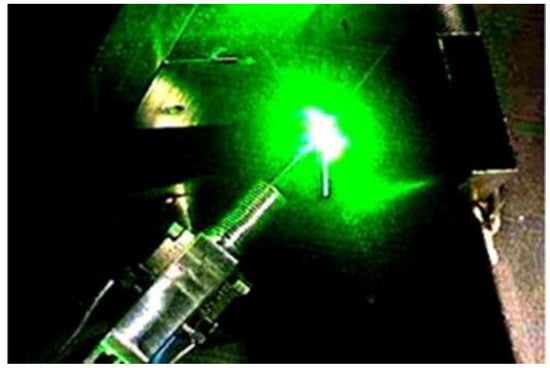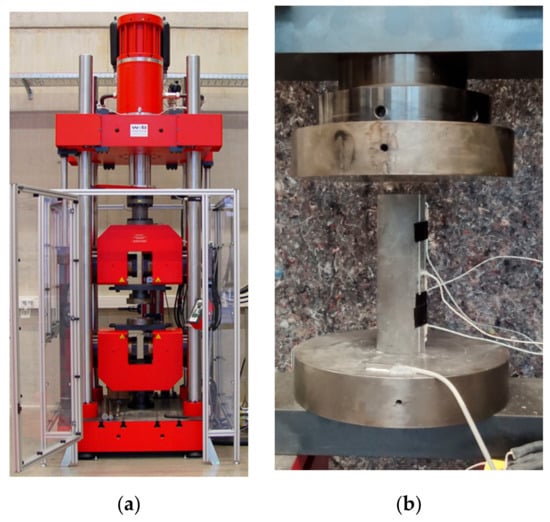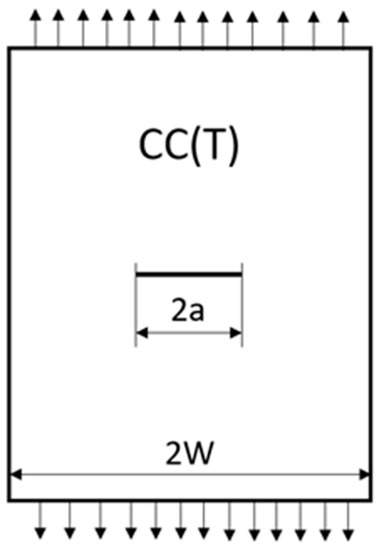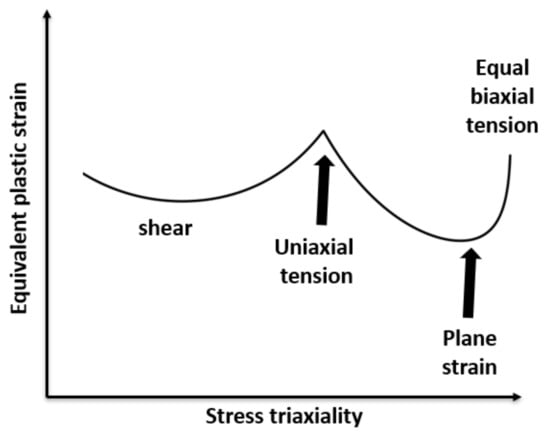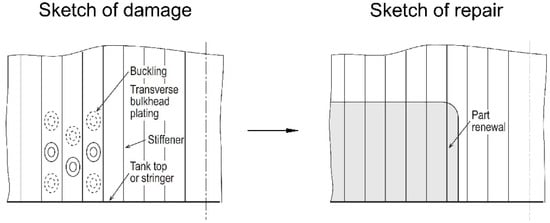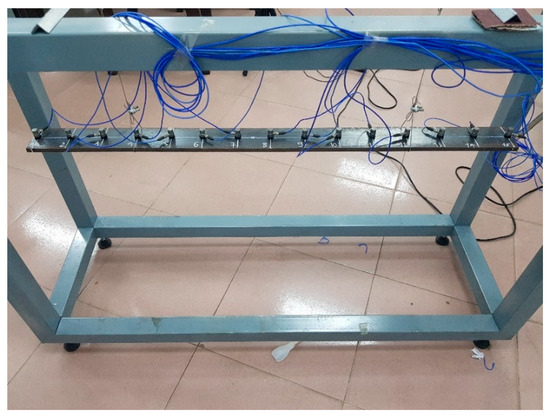Fracture, Fatigue, and Wear
Share This Topical Collection
Editor
 Prof. Dr. Magd Abdel Wahab
Prof. Dr. Magd Abdel Wahab
 Prof. Dr. Magd Abdel Wahab
Prof. Dr. Magd Abdel Wahab
E-Mail
Website
Collection Editor
Laboratory Soete, Faculty of Engineering and Architecture, Ghent University, Technologiepark Zwijnaarde 903, B-9052 Zwijnaarde, Belgium
Interests: computational mechanics; fracture mechanics; damage mechanics; finite element analysis; fatigue of materials; fretting fatigue; fretting wear; durability; dynamics and vibration of structures
Special Issues, Collections and Topics in MDPI journals
Topical Collection Information
Dear Colleagues,
We are expecting to solicit excellent contributions related to topics on "Fracture, Fatigue, and Wear", with a collection of peer-reviewed papers, which further develop researches within broader Topical Collection theme. We would like to invite you to contribute to this collection.
The overall objective of the Topical Collection "Fracture, Fatigue, and Wear" is to publish high quality research articles in fields related to Fracture Mechanics, Fatigue of Materials, Tribology and Wear of Materials. The Topical Collection covers industrial engineering applications of the above topics including theoretical and analytical methods, numerical simulations and experimental techniques.
Prof. Dr. Magd Abdel Wahab
Collection Editor
Manuscript Submission Information
Manuscripts should be submitted online at www.mdpi.com by registering and logging in to this website. Once you are registered, click here to go to the submission form. Manuscripts can be submitted until the deadline. All submissions that pass pre-check are peer-reviewed. Accepted papers will be published continuously in the journal (as soon as accepted) and will be listed together on the collection website. Research articles, review articles as well as short communications are invited. For planned papers, a title and short abstract (about 250 words) can be sent to the Editorial Office for assessment.
Submitted manuscripts should not have been published previously, nor be under consideration for publication elsewhere (except conference proceedings papers). All manuscripts are thoroughly refereed through a single-blind peer-review process. A guide for authors and other relevant information for submission of manuscripts is available on the Instructions for Authors page. Applied Mechanics is an international peer-reviewed open access quarterly journal published by MDPI.
Please visit the Instructions for Authors page before submitting a manuscript.
The Article Processing Charge (APC) for publication in this open access journal is 1400 CHF (Swiss Francs).
Submitted papers should be well formatted and use good English. Authors may use MDPI's
English editing service prior to publication or during author revisions.
Published Papers (17 papers)
Open AccessArticle
Influence of Lubricant Properties on Elastohydrodynamic Oil Film Thickness in Angular Contact Ball Bearings: A Numerical Investigation
by
Hikmet Bal
Viewed by 1333
Abstract
Predicting oil film thickness at ball–raceway contacts under elastohydrodynamic lubrication (EHL) conditions remains a complex tribological challenge. This complexity arises from dynamic variations in contact load, rotational speed, hydrodynamic effects, and the nonlinear load–deformation characteristics of the contacting surfaces. This study presents a
[...] Read more.
Predicting oil film thickness at ball–raceway contacts under elastohydrodynamic lubrication (EHL) conditions remains a complex tribological challenge. This complexity arises from dynamic variations in contact load, rotational speed, hydrodynamic effects, and the nonlinear load–deformation characteristics of the contacting surfaces. This study presents a numerical investigation of oil film thickness variations corresponding lubricant properties in rolling bearings using a 5-degree-of-freedom (5-DoF) shaft–bearing model. The model incorporates isothermal EHL and a rigid shaft supported by a pair of angular contact ball bearings. The governing nonlinear equations of motion are solved iteratively via a quasi-static approach, coupling oil film thickness and contact force calculations. Results indicate that oil film thickness increases proportionally with both lubricant viscosity and shaft speed. A twofold increase in shaft speed results in approximately 57% enhancement in film thickness. Similarly, increasing viscosity elevates film thickness proportionally, while the pressure–viscosity coefficient significantly enhances film formation. Notably, the outer raceway exhibits a 13% thicker film than the inner raceway, owing to its higher surface conformity. Furthermore, low-speed operation under heavy loads induces mixed lubrication regimes, compromising film integrity. Results provides insight for lubricant selection and bearing design to mitigate starvation in industrial applications.
Full article
►▼
Show Figures
Open AccessArticle
Biotribological Wear Prediction of Alumina–Polymer Hip Prostheses Using Finite Element Analysis
by
Mhd Ayham Darwich, Hasan Mhd Nazha, Hiba Mohsen Ghadir and Ahmad Salamah
Viewed by 1192
Abstract
This study investigates the biotribological performance of alumina–UHMWPE and alumina–PEEK hip implant couples through finite element simulation (ANSYS v24) and statistical inference (STATA v17). During gait cycle loading simulations, significant disparity in wear behaviour was observed. Alumina–UHMWPE demonstrated superior mechanical resistance, with a
[...] Read more.
This study investigates the biotribological performance of alumina–UHMWPE and alumina–PEEK hip implant couples through finite element simulation (ANSYS v24) and statistical inference (STATA v17). During gait cycle loading simulations, significant disparity in wear behaviour was observed. Alumina–UHMWPE demonstrated superior mechanical resistance, with a wear volume of 0.18481 mm
3 and a wear depth of 6.93 × 10
−4 mm compared to alumina–PEEK, which registered higher wear (volume: 8.4006 mm
3; depth: 3.15 × 10
−2 mm). Wear distribution analysis indicated alumina–UHMWPE showed an even wear pattern in comparison to the poor, uneven alumina-PEEK high-wear patterns. Statistical comparison validated these findings, wherein alumina–UHMWPE achieved a 27.60 hip joint wear index (HCI) value, which is better than that of alumina–PEEK (35.85 HCI), particularly regarding key parameters like wear depth and volume. This computational–statistical model yields a baseline design for biomaterial choice, demonstrating the potential clinical superiority of alumina–UHMWPE in reducing implant failure risk. While this is a simulation study lacking experimental validation, the results pave the way for experimental and clinical studies for further verification and refinement. The approach enables hip arthroplasty design optimization with maximal efficiency and minimal resource-intensive testing.
Full article
►▼
Show Figures
Open AccessArticle
Experimental Validation of Exact Burst Pressure Solutions for Thick-Walled Cylindrical Pressure Vessels
by
Xian-Kui Zhu
Cited by 2 | Viewed by 2186
Abstract
Burst pressure is one of the critical strength parameters used in the design and operation of pressure vessels because it represents the maximum pressure that a vessel can withstand before failing. Historically, the Barlow formula was used as a design base for estimating
[...] Read more.
Burst pressure is one of the critical strength parameters used in the design and operation of pressure vessels because it represents the maximum pressure that a vessel can withstand before failing. Historically, the Barlow formula was used as a design base for estimating burst pressure. However, it does not consider the plastic flow response for ductile steels and is applicable only to thin-walled cylinders (i.e., the diameter to thickness ratio D/t ≥ 20). A new multiaxial plastic yield theory was developed to consider the plastic flow response, and the associated theoretical (i.e., Zhu–Leis) solution of burst pressure was obtained and has gained extensive applications in the pipeline industry because it was validated by different full-scale burst test datasets for large-diameter, thin-walled pipelines in a variety of steel grades from Grade B to X120. The Zhu–Leis flow theory of plasticity was recently extended to thick-walled pressure vessels, and the associated exact flow solution of burst pressure was obtained and is applicable to both thin and thick-walled cylindrical shells. Many full-scale burst tests are available for thin-walled line pipes in the pipeline industry, but limited pressure burst tests exist for thick-walled vessels. To validate the newly developed exact solutions of burst pressure for thick-walled cylinders, this paper conducts a series of burst pressure tests on small-diameter, thick-walled pipes. In particular, six burst tests are carried out for three thick-walled pipes in Grade B carbon steel. These pipes have a nominal diameter of 2.375 inches (60.33 mm) and three nominal wall thicknesses of 0.154, 0.218, and 0.344 inches (3.91, 5.54, and 8.74 mm), leading to D/t = 15.4, 10.9, and 6.9, respectively. With the burst test data, comparisons show that the Zhu–Leis flow solution of burst pressure matches well the burst test data for thick-walled pipes. Thus, these burst tests validate the accuracy of the Zhu–Leis flow solution of burst pressure for thick-walled cylindrical vessels.
Full article
►▼
Show Figures
Open AccessArticle
A Crystal Plasticity-Based Simulation to Predict Fracture Initiation Toughness of Reactor-Grade Aluminium: Experimental Verification and Study of Effect of Crystal Orientation
by
Mahendra Kumar Samal, Trishant Sahu and Ather Syed
Viewed by 2300
Abstract
Aluminium alloys are used for the fabrication of the fuel clad of research-grade nuclear reactors as well as for several types of core components of high-flux research reactors. In order to carry out design and safety analysis of these components, their mechanical and
[...] Read more.
Aluminium alloys are used for the fabrication of the fuel clad of research-grade nuclear reactors as well as for several types of core components of high-flux research reactors. In order to carry out design and safety analysis of these components, their mechanical and fracture properties are required by the designer. In this work, experiments have been conducted on tensile specimens machined from an aluminium alloy block to evaluate the material stress-strain curve. Experiments have also been conducted on disc-shaped compact tension specimens in order to determine the fracture toughness of aluminium alloy. Numerical simulations of both tensile and fracture specimens have been carried out using the crystal plasticity model. Initially, the slip system level parameters of the crystal plasticity material model have been calibrated using experimental stress-strain data for single as well as polycrystalline aluminium. For the prediction of crack initiation toughness, Rice and Tracey’s damage model has been used. The critical damage parameter has been evaluated for a fractured specimen with a crack length-to-width (
a/
W) ratio of 0.6. The attainment of the critical damage parameter in the analysis corresponds to the instance of experimentally observed ductile crack initiation in the specimen. Later, this model was applied to other fracture specimens with different
a/
W ratios with values ranging from 0.39 to 0.59. It was observed that the critical damage parameter corresponding to crack initiation in the material has a very small variation, even if the specimens have different crack lengths. It is well-known in the literature that Rice and Tracey’s critical damage parameter is a material constant. Hence, we have applied the same model to predict crack initiation for single crystal fracture specimens with two different orientations of the crack plane. It was observed that the <111> orientation is more susceptible to crack initiation and propagation compared with the <100> orientation, as the damage parameter is high in the ligament of the specimen ahead of the crack tip for the same level of applied loading. As the [111] crack plane is more closely packed compared with the [100] plane, the distance between atomic planes is greater for the former, and hence, it is more susceptible to ductile damage. The results of the experiments and the material damage parameter are helpful for the integrity analysis of the fuel clad of research reactors as well as components of high-flux research reactors.
Full article
►▼
Show Figures
Open AccessArticle
Fatigue Damage of Short Fibre-Reinforced Thermoplastics in Crashworthiness Simulation
by
Christian Witzgall and Sandro Wartzack
Cited by 1 | Viewed by 2048
Abstract
Service loads repeatedly stress components on a regular basis and lead to fatigue damage in the material. In the case of components made of short fibre-reinforced thermoplastics, which are also crash-relevant in addition to only bearing service loads, however, a significant deterioration in
[...] Read more.
Service loads repeatedly stress components on a regular basis and lead to fatigue damage in the material. In the case of components made of short fibre-reinforced thermoplastics, which are also crash-relevant in addition to only bearing service loads, however, a significant deterioration in mechanical properties can be observed after fatigue damage has been introduced. This is where the approach presented in this paper comes in: in order to enable a realistic simulation of such components in their used conditions, the material data are assigned depending on previously determined damage. The approach, which combines the domains of highly dynamic and cyclic experiments as well as different types of numerical simulations, is tested for its performance in the present paper. For this purpose, component tests are carried out on cross-rib beams, which serve to validate the method. The novelty and uniqueness of this paper lies in the linking of fatigue life and crashworthiness considerations for short fibre-reinforced thermoplastics, which, in this case, is raised to a new level by considering the component level for the first time.
Full article
►▼
Show Figures
Open AccessArticle
Real-Time Detection of Faults in Rotating Blades Using Frequency Response Function Analysis
by
Ravi Prakash Babu Kocharla, Murahari Kolli and Muralimohan Cheepu
Cited by 9 | Viewed by 3427
Abstract
Turbo machines develop faults in the rotating blades during operation in undesirable conditions. Such faults in the rotating blades are fatigue cracks, mechanical looseness, imbalance, misalignment, etc. Therefore, it is crucial that the blade faults should be detected and diagnosed in order to
[...] Read more.
Turbo machines develop faults in the rotating blades during operation in undesirable conditions. Such faults in the rotating blades are fatigue cracks, mechanical looseness, imbalance, misalignment, etc. Therefore, it is crucial that the blade faults should be detected and diagnosed in order to minimize the severe damage of such machines. In this paper, vibration analysis of the rotating blades is conducted using an experimental laboratory setup in order to develop a methodology to detect faults in the rotating blades. The faults considered for the study include cracks and mechanical looseness for which dynamic responses are recorded using a laser vibrometer. Analysis has been carried out by comparing the frequency response function spectrums of the fault blade with those of the healthy blade related to the resonance frequency. The Internet of Things and wireless sensor networks are implemented to transmit the measured data to the cloud platform. A support vector machine algorithm is used for preparing the learning model in order to extract and classify the faults of the rotating blades. It can be clearly seen from the results that there is variation in the frequency response function spectrums of healthy and faulty conditions of the rotating blades.
Full article
►▼
Show Figures
Open AccessArticle
An Innovative Approach to Improving Residual Stress Distribution and Metallurgical Refinement of Forged AA7175 Applied in the Aeronautical Industry
by
Kadiata Ba, Sasan Sattarpanah Karganroudi, Ahmad Aminzadeh, Mousa Javidani and Mohammad Saleh Meiabadi
Cited by 1 | Viewed by 2375
Abstract
In this study, a novel approach for residual stress (RS) distribution on forged AA7175 is considered to replace and simplify the manufacturing process, based on the lean manufacturing concept. AA7175 alloy is a quench-sensitive material applied in the aeronautics industry, which is subjected
[...] Read more.
In this study, a novel approach for residual stress (RS) distribution on forged AA7175 is considered to replace and simplify the manufacturing process, based on the lean manufacturing concept. AA7175 alloy is a quench-sensitive material applied in the aeronautics industry, which is subjected to vibration and cyclic loads leading to fatigue failure. Generally, costly postprocessing operations, such as shot peening, are used to modify RS on the surfaces of parts. Considering the fact that this operation is usually performed manually and is costly, the industrial sectors have been searching for an alternative to simplify the process. Here, quenching and T74 aging are found to advantageously modify RS distribution by forming compressive RS on parts’ surface layers. The proposed heat treatment allows for the removal of the shot-peening process, helping to reduce the costs associated with the manufacturing process and to increase production quality.
Full article
►▼
Show Figures
Open AccessArticle
Application-Oriented Digital Image Correlation for the High-Speed Deformation and Fracture Analysis of AISI 1045 and Ti6Al4V Materials
by
Lars Gerdes, Sebastian Berger, Jannis Saelzer, Pascal Franck, Ramon Helwing, Andreas Zabel and Frank Walther
Cited by 5 | Viewed by 3137
Abstract
In order to achieve realistic simulations of the chip formation, high quality input data regarding the flow stress and damage behavior of the materials are required. The split Hopkinson pressure bar (SHPB) test setup for the characterization of highly dynamic material properties offers
[...] Read more.
In order to achieve realistic simulations of the chip formation, high quality input data regarding the flow stress and damage behavior of the materials are required. The split Hopkinson pressure bar (SHPB) test setup for the characterization of highly dynamic material properties offers a suitable method for generating high strain rates, similar to those in the chip formation zone. However, the strain measurement in SHPB is usually performed by means of strain gauges. This leads to an unreliable evaluation of strain rate and flow stress/shear flow stress in the case of an inhomogeneous material deformation, since this method presents the total strain whilst excluding local deformations. Inhomogeneous deformations are induced deliberately in special shear specimens, as they are also observed in the investigated cylindrical specimens. The present work deals with this issue by providing two additional measurement techniques, which are applied in SHPB tests for cylindrical specimens made of AISI 1045 and Ti6Al4V. To enable a local strain resolution, digital image correlation (DIC) is applied to high-speed images of the deformation process. In order to allow for the detection of shear bands in the specimens, a deep-learning-based approach is presented. The two measurement methods (strain gauges and DIC) are compared and discussed. In particular, the findings regarding the inhomogeneous deformation of Ti6Al4V allow for future improvements in the result quality of SHPB tests. The presented algorithm shows promising predictions for shear band detection and creates the basis for an automated evaluation of shear sample results, as well as an AI-based pre-selection of frames for the DIC evaluation of SHPB tests.
Full article
►▼
Show Figures
Open AccessArticle
Fatigue Life Analysis of Automotive Cast Iron Knuckle under Constant and Variable Amplitude Loading Conditions
by
Kazem Reza Kashyzadeh, Kambiz Souri, Abdolhossein Gharehsheikh Bayat, Reza Safavi Jabalbarez and Mahmood Ahmad
Cited by 21 | Viewed by 6403
Abstract
The main aim of the present paper is to assess the fatigue lifetime of ductile cast iron knuckles as one of the critical components of an automotive steering system. To this end, a real driving path, including various maneuvers, such as acceleration, braking,
[...] Read more.
The main aim of the present paper is to assess the fatigue lifetime of ductile cast iron knuckles as one of the critical components of an automotive steering system. To this end, a real driving path, including various maneuvers, such as acceleration, braking, cornering, and moving on various types of road roughness, was considered. Different load histories, which are applied on various joints of the component (i.e., lower control arm, steering linkage, and Macpherson strut), were extracted through Multi-Body Dynamics (MBD) analysis of a full vehicle model. The achievements of previous studies have proved that the steering knuckle fails from the steering linkage and due to the rotational motion. Therefore, only this destructive load history was considered in future analyses of the present study. The CAD model was created using Coordinate Measuring Machine (CMM) data and some corrections in CATIA software. Furthermore, transient dynamic analysis was performed, and the time history of von Misses equivalent stress was obtained at the root of the steering linkage (which is exactly the location of failure based on the laboratory data as well as finite element simulations validated by the author in the previous studies). To predict the fatigue life of a component, two different methodologies were considered. Firstly, some well-known criteria were employed for equalization of load spectrum to a Constant Amplitude Loading (CAL). Then, fatigue analysis under sinusoidal loading was performed. Secondly, the fatigue life of the component considering Variable Amplitude Loading (VAL) was predicted using the Critical Plane Method (CPM), employing the Rain-flow cycle counting technique, and utilizing the Miner–Palmgren damage accumulation rule. Eventually, to evaluate the prediction accuracy of different methodologies, the obtained results were compared with the full-scale axial variable amplitude fatigue test which was performed by the corresponding author. The results indicated that the prediction of variable amplitude fatigue lifetime by Finite Element (FE) analysis in the time domain has about 21% error compared to reality. Additionally, the relative error between the results obtained from two different methodologies is about 20%, which is acceptable due to the scattering of the fatigue phenomenon results, the complex geometry of the part, and the complicated loading.
Full article
►▼
Show Figures
Open AccessArticle
Multi Scale Modelling of Friction Induced Vibrations at the Example of a Disc Brake System
by
Arn Joerger, Ioannis Spiropoulos, Robert Dannecker and Albert Albers
Cited by 3 | Viewed by 3865
Abstract
Friction induced vibrations such as brake squealing, or juddering are still challenging topics in product engineering processes. So far, this topic was particularly relevant for the automobile industry because they were the main market for disc brake systems. However, since mobility habits change,
[...] Read more.
Friction induced vibrations such as brake squealing, or juddering are still challenging topics in product engineering processes. So far, this topic was particularly relevant for the automobile industry because they were the main market for disc brake systems. However, since mobility habits change, disc brake system are more often to be found on bikes or e-scooters. In all of these systems, vibrations are excited in contacts on the micro scale but affect the user comfort and safety on the macro scale. Therefore, the aim of this cross-scale method is to analyze a system on a micro scale and to transfer the excitation mechanisms on a macro scale system. To address both scales, the current work presents a finite element model on the micro scale for the determination of the coefficient of friction, which is transferred to the macro scale and used in a multi-body simulation. Finally, a finite element modal analysis is conducted, which allowed us to evaluate the brake system behavior on base of an excitation.
Full article
►▼
Show Figures
Open AccessArticle
Effects of Curing on Photosensitive Resins in SLA Additive Manufacturing
by
Carmela Riccio, Marco Civera, Oliver Grimaldo Ruiz, Perla Pedullà, Mariana Rodriguez Reinoso, Giulia Tommasi, Martina Vollaro, Vito Burgio and Cecilia Surace
Cited by 69 | Viewed by 12460
|
Correction
Abstract
Different mechanical properties characterise the materials of 3D printed components, depending on the specific additive manufacturing (AM) process, its parameters, and the post-treatment adopted. Specifically, stereolithography (SLA) uses a photopolymerisation technique that creates solid components through selective solidification. In this study, 72 specimens
[...] Read more.
Different mechanical properties characterise the materials of 3D printed components, depending on the specific additive manufacturing (AM) process, its parameters, and the post-treatment adopted. Specifically, stereolithography (SLA) uses a photopolymerisation technique that creates solid components through selective solidification. In this study, 72 specimens were 3D printed using 12 commercial-grade methacrylate resins and tested under uniaxial tensile loads. The resin specimens were evaluated before and after curing. The recommended cure temperature and time were followed for all materials. The stress-strain curves measured during the testing campaign were evaluated in terms of maximum tensile strength, Young’s modulus, ductility, resilience, and toughness. The results reveal that the curing process increases the material stiffness and resistance to tensile loads. However, it was found that the curing process generally reduces the plasticity of the resins, causing a more or less marked brittle behaviour. This represents a potential limitation to the use of SLA 3D printing for structural elements which require some plasticity to avoid dangerous sudden failures.
Full article
►▼
Show Figures
Open AccessArticle
Effect of Laser Peening with a Microchip Laser on Fatigue Life in Butt-Welded High-Strength Steel
by
Tomoharu Kato, Yoshihiro Sakino and Yuji Sano
Cited by 8 | Viewed by 3279
Abstract
Laser peening introduces compressive residual stresses on the surfaces of various materials and is effective in enhancing fatigue strength. Using a small microchip laser, with energies of 5, 10, and 15 mJ, the authors applied laser peening to the base material of an
[...] Read more.
Laser peening introduces compressive residual stresses on the surfaces of various materials and is effective in enhancing fatigue strength. Using a small microchip laser, with energies of 5, 10, and 15 mJ, the authors applied laser peening to the base material of an HT780 high-strength steel, and confirmed compressive residual stresses in the near-surface layer. Laser peening with a pulse energy of 15 mJ was then applied to fatigue samples of an HT780 butt-welded joint. It was confirmed that laser peening with the microchip laser prolonged the fatigue life of the welded joint samples to the same level as in previous studies with a conventional laser.
Full article
►▼
Show Figures
Open AccessArticle
Consideration of the Heating of High-Performance Concretes during Cyclic Tests in the Evaluation of Results
by
Melchior Deutscher
Cited by 4 | Viewed by 2869
Abstract
Material-efficient, highly load-bearing members made of high-performance compressive concretes are often exposed to cyclical loads because of their slender construction, which can be relevant to the design. When investigating the fatigue behaviour of high-performance concretes in pressure swell tests, however, the specimen temperature
[...] Read more.
Material-efficient, highly load-bearing members made of high-performance compressive concretes are often exposed to cyclical loads because of their slender construction, which can be relevant to the design. When investigating the fatigue behaviour of high-performance concretes in pressure swell tests, however, the specimen temperature rises strongly owing to the elevated loading rate at frequencies higher than 3 Hz. This leads to a negative influence on the achieved number of load cycles compared to tests carried out at slow speeds and calculated values, for example, according to fib Model Code 2010. This phenomenon, which was already observed, must be considered when generating design formulae or Wöhler lines for component design, as the test conditions with high constant load frequencies as well as sample storage in a climate chamber at constant conditions are prerequisites that cannot be expected in real material applications. Therefore, laboratory testing influences must be eliminated in order to avoid underestimating the material. Instead of adjusting the test conditions to prevent or control temperature development, as was the case in previous approaches, this article shows how the temperature effects can be corrected when analysing the results, considering both the applied stress and the maximum temperature reached. For this purpose, a calculation method was developed that was validated on the basis of a large number of fatigue tests. Thus, in the future, the application of one temperature sensor to the test specimen can effectively advance the extraction of values for Wöhler curves, even with high test frequencies.
Full article
►▼
Show Figures
Open AccessArticle
CC(T) Specimen Load-Bearing Capacity Related to Yield Strength and Upper-Shelf Charpy-V Energy
by
Kim Wallin
Viewed by 2652
Abstract
The load-bearing capacity of a CC(T) specimen (Center-Cracked Tension) in the ductile fracture regime is usually controlled by plastic collapse. If the material’s tearing resistance is sufficiently low, the load-bearing capacity can drop below the plastic collapse value. Here, a recently developed simple
[...] Read more.
The load-bearing capacity of a CC(T) specimen (Center-Cracked Tension) in the ductile fracture regime is usually controlled by plastic collapse. If the material’s tearing resistance is sufficiently low, the load-bearing capacity can drop below the plastic collapse value. Here, a recently developed simple fracture mechanics-based Charpy-V impact energy criterion for plastic collapse was used to provide a best estimate assessment of the CC(T) specimen load-bearing capacity.
Full article
►▼
Show Figures
Open AccessArticle
Study of Influence of Width to Thickness Ratio in Sheet Metals on Bendability under Ambient and Superimposed Hydrostatic Pressure
by
Mohammadmehdi Shahzamanian, David Lloyd, Amir Partovi and Peidong Wu
Cited by 8 | Viewed by 3931
Abstract
The effect of the width to thickness ratio on the bendability of sheet metal is investigated using the finite element method (FEM) employing the Gurson–Tvergaard–Needleman (GTN) model. Strain path changes in the sheet with change in the width/thickness ratio. It is shown that
[...] Read more.
The effect of the width to thickness ratio on the bendability of sheet metal is investigated using the finite element method (FEM) employing the Gurson–Tvergaard–Needleman (GTN) model. Strain path changes in the sheet with change in the width/thickness ratio. It is shown that bendability and fracture strain increase significantly by decrease in the width/thickness ratio. The stress state is almost uniaxial when the stress ratio (α) is close to zero for narrow sheets. Stress ratio is nothing but the major stress to minor stress ratio. This delays the growth and coalescence of micro-voids as the volumetric strain and stress triaxiality (pressure/effective stress) decrease. On the other hand, ductility decreases with increase in α for wider sheets. Fracture bending strain is calculated and, as expected, it increases with decrease in the width/thickness ratio. Furthermore, a brief study is performed to understand the effect of superimposed hydrostatic pressure on fracture strain for various sheet metals with different width/thickness ratios. It is found that the superimposed hydrostatic pressure increases the ductility, and that the effect of the width/thickness ratio in metals on ductility is as significant as the effect of superimposed hydrostatic pressure. Numerical results are found to be in good agreement with experimental observations.
Full article
►▼
Show Figures
Open AccessFeature PaperArticle
Buckling Strength Assessment of Composite Patch Repair Used for the Rehabilitation of Corroded Marine Plates
by
Nikos Kallitsis and Konstantinos N. Anyfantis
Cited by 2 | Viewed by 3742
Abstract
A common form of damage encountered in marine structures is the accumulation of corrosion in susceptible areas, which leads to material wastage. As a result, the structural strength of the members affected is compromised, endangering their safe operation in design loads. Consequently, structural
[...] Read more.
A common form of damage encountered in marine structures is the accumulation of corrosion in susceptible areas, which leads to material wastage. As a result, the structural strength of the members affected is compromised, endangering their safe operation in design loads. Consequently, structural instabilities may occur, such as buckling due to compressive or/and shear loads. An alternative repair practice for preventing such phenomena, approved for secondary load-carrying members, is the application of composite patches to the damaged area. In this preliminary study, this technique is examined in the scope of developing a framework that can be used to find the optimal solution for restoring the buckling strength of a corroded plate. The methods used to achieve this are based on finite element analysis (FEA) and design of experiments (DoE) to statistically analyze the aforementioned numerical calculations. By introducing the composite patch’s percentage coverage of its metal substrate and number of plies as design parameters, a response surface is generated with respect to the obtained factor of safety (regarding its reference uncorroded buckling strength). This list of data points is then evaluated, and an acceptable surface/list of design parameters’ combinations is generated.
Full article
►▼
Show Figures
Open AccessArticle
Damage Evaluation of Free-Free Beam Based on Vibration Testing
by
Duong Huong Nguyen, Long Viet Ho, Thanh Bui-Tien, Guido De Roeck and Magd Abdel Wahab
Cited by 12 | Viewed by 6742
Abstract
Damage can be detected by vibration responses of a structure. Damage changes the modal properties such as natural frequencies, mode shapes, and damping ratios. Natural frequency is one of the most frequently used damage indicators. In this paper, the natural frequency is used
[...] Read more.
Damage can be detected by vibration responses of a structure. Damage changes the modal properties such as natural frequencies, mode shapes, and damping ratios. Natural frequency is one of the most frequently used damage indicators. In this paper, the natural frequency is used to monitor damage in a free-free beam. The modal properties of the intact free-free beam are identified based on a setup of 15 accelerometers. A finite element model is used to model the free-free beam. Three models are considered: beam (1D), shell (2D), and solid (3D). The numerical models are updated based on the first five bending natural frequencies. The free-free beam is damaged by a rectangle cut. The experiment is re-setup and the model properties of the damaged beam are re-identified. The cuttings are modeled in the numerical simulations. The first five numerical bending natural frequencies of the damaged beam are compared with the experimental ones. The results showed that the 1D beam element model has the highest errors, while the 2D and 3D models have approximately the same results. Therefore, the 2D representation can be used to model the damaged beam for fast computation.
Full article
►▼
Show Figures









